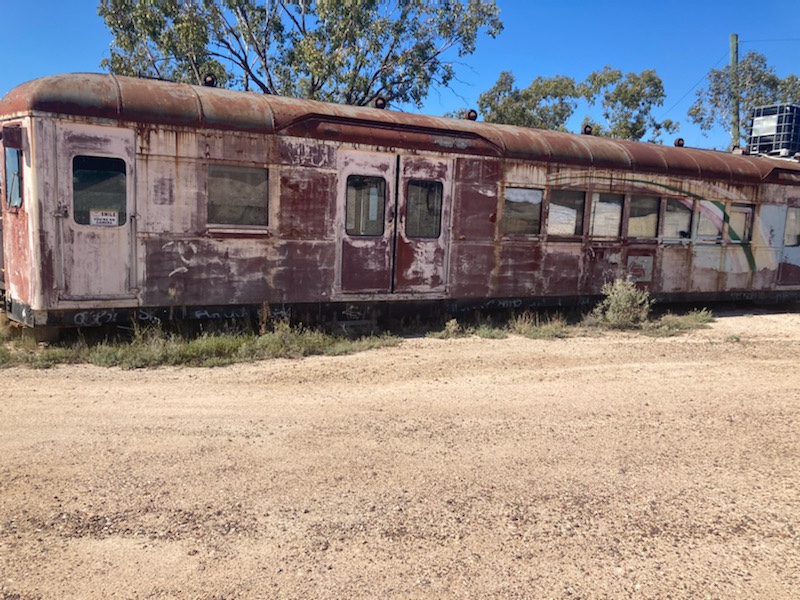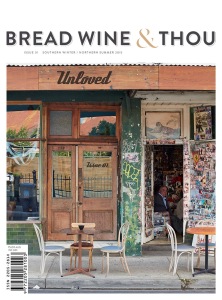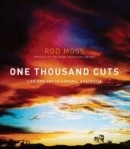He’s a tall man, slim. He wears clothing of dark gray. When he gives his surname, I nominatecorrectly his country of origin in Northern Europe. It’s only after we’ve parted that it occurs to me his name translates to Big Son. He might well descendfrom a line of big sons.
Even though he’s past retirement age, I ask him what he does for a living. Out here the farmers and the miners never quite give it up. I’m a miner, he says – a shrug, a wry smile. The lure of the big find is too strong for some to stop.
– Where do you live?
– Out along the Seven Mile. I’ll take you and show you if you like. You can see the diggings.
– OK, I have your address. I’ll drive out.
– You can’t. You’ll get lost.
This rings true. The town is peopled by those who don’t wish to be found, persons escaping the Lawor vendetta or drug dealers or the tax man or the former spouse, or a life of persecution in the old country. Nobody really knows the population. The town boasts fifty-four ethnic groups. As you drive into town a sign welcomes the visitor. A little further on a sign reads: “POPULATION ?”
The 2016 census lists 2016 persons, a neat match, probably too neat. No one really knows. It’s though a further 3000-odd are hidden away in the hills, where they live in disused trams or railway carriages, huts and caves. In the past, the local Police designated a discrete patch of earth behind the shopping strip where scamps and scally wags were allowed to park when they came into town for supplies. Certain back roads were allotted to these folk. The Police would ask no questions so long as the miners did not bring themselves to their attention.
Big Son instructs me to meet him outside the front of the clinic after I finish work: you can follow me out along the Seven Mile. At 5.00 precisely I step out into bright sunshine where Big Son looks at my white hire car and says, Get into my vehicle. Yours is too pretty to take out bush. I jump in to a large, hard-working 4-wheel drive and we drive out of town.
The further we drive the thicker the marks of the digger. Low structures of tin and timber alternate with mullock heaps of pale stone and earth and random bit of rusted machinery. We’ve left the bitumen behind us, dirt tracks branch off and wind off in all directions into thin scrub. I’ve lost my bearings. My companion keeps up a commentary: that claim there belongs to a friend…over here you can see cabins…the people over on the right run a really good tourist operation.
Before I came to this country I moved to Roma – I had a girlfriend there, the usual story, you know – in Roma I set up a photographic studio.
Photography was my trade.
The narrating voice has taken on a note of pride.
I didn’t speak the language, but I taught myself by watching videos in Italian. I succeeded as a linguist but I struggled in my photography business. No network.
I visited Australia – curiosity, you know? Back in Roma I applied for a visa to settle in Australia. It was for adventure. I came out here and started to dig. I married once, had a couple of daughters. The marriage ended. Married again, my wife is an artist, an art teacher. We fostered a little child. He was murdered. My wife went mad. I sold up, sold all this – by now we’re at his claim and we’ve pulled up – I had to sell and take her to the city for treatment…
The young bloke who lived over the hill there, a loner, a misfit, killed the little one. He lived there, a recluse, a neighbour. No one knew anything about him until he committed murder. Of a child.

My wife got better and we came back. I got a new claim just by my old one. This is it. ‘This’ is a patch of elevated stony ground with holes in it. Disparate bits of metalwork rise above the surface and disappear below. I peer down a hole walled by a cylinder of galvanised iron. The hole is a mine, about one and a half metres in diameter. My host says, it goes down eighteen metres. I consider the dark and the deep. Obviously you don’t suffer claustrophobia…
I do, to a degree. I think anyone with imagination must.

Bright blue steel steps disappear into the depth of another circular hole. Big Son says, a friend invented that spiral staircase. The friend sells them to diggers and small miners across the country. This machine here he points to a steel contraption – I built. I invented it and patented it. I’ve sold a few of them, but most diggers can’t afford $18,000…

The machine that my host devised is a complicated structure of thick steel, encasing steel cables, an electric motor and meters with dials and numbers. It stands, grey, substantial and sophisticated on the primal earth. There’s not a speck of rust. It’s a machine for digging a mine. I gaze at the device in awe. Inventor and invention alike stand solid and impressive, gunmetal grey, erect in the unforgiving sun.
Who trained you in engineering?
No one. I always liked machines, devices, gadgets. I pulled things apart, curious you know?
What does a digger do who can’t afford a mechanical digger? Pick and shovel?
Yes. If they can’t scavenge bits of old machinery. Maybe fix it up, get it working.
I consider pick and shovel work in the digital age. Out here summer temperatures reach fifty in the shade and stay there for days. But I do know why a digger might stick at it. On the way out of town Big Son pointed out a jewellery showroom: Very honest people there, prices very reasonable. They’ve got a gem there that I dug up, very valuable. They paid ten thousand for it. They’ll sell it for forty thousand, but they might have to hold it for years.
Another person, obese, not old, walking on a stick, hobbled and rolled picturesquely into the clinic this morning. Both her florid gait and her words told a story that stretched the truth in support of her quest for a medical certificate for welfare benefits.
We moved onto other subjects.
What’s your work – when you’re able to do it?
I’m a miner, she said. I’ve got forty thousand worth of raw gems in this bag.
In this town that outlandish statement might just be simple truth.
Here, gemstone is currency that doesn’t leave records. Bankers, accountants, the taxman need not know.
My tall host looks around his claim. He says, There’s always theft. You can’t make your property safe from thieves.
I ask, Do people arm themselves?
Some do, they have guns… shootings aren’t rare out here.
This here is my blower – Big Son points to a large hollow, elevated structure of steel and rust, that rises above the claim, shaped like one of those concrete mixers you see on trucks at building sites. This towers above us. It does something with mullock that I don’t really understand, but it sounds like winnowing. My host tries to explain: You see that motor there? I found it in a derelict street sweeper. It’s a three-cylinder diesel. I adapted it. It’s noisy. The miner turns a switch. A battery turns the motor over, it fires then clamour, brutal and immediate, drowns conversation. The thick steel platform vibrates beneath our feet.
Come this way, into the house. Twenty metres from the claim, just down a small slope and hidden from sight at the claim, stands an elegant modern building of steel and timber. Yes, this too was designed and built by my host. It stands on leasehold land. The house lease is separate from the mine lease: You get a home lease for twenty-five years. You renew it every twenty-five years.
We pause at the threshold. Big son points: these stones everywhere, that’s gemstone waste, that’s potch. My host leans a long way down and picks up a pebble. Here take this, a little souvenir. I look at the little grey pebble. Its centre glows with blue and green fire.
Inside, all is dark. A woman of middle age materialises and speaks in a florid French accent.
We stand in the dark room until electric light reveals walls hung with artworks in oils that startle with their mute emotional power. The artist steps from the shadow and speaks with shy pride about the paintings.
– You see that brown shading? Do you know what I use for pigment?
I regard the glowing brown and shake my head.
– Coffee. Nescafe. I’ve tried other instant coffee. Nescafe gives that fire in the brown.
We come to a bathroom whose walls are a menagerie of megafauna: emu, koala, kangaroo, in their greys and browns move across bright panels of white and lime. My hostess explains: We sit on the toilet and instead of blank walls, we gaze at animals, bounding across the walls, alive.
We pass a small portrait, the only watercolour. The painter passes it by. Big Son pauses. We regard a bright portrait of a little boy with a face full of life andwild, straw-coloured hair. He radiates light. Big Son says quietly, this is our little one.






